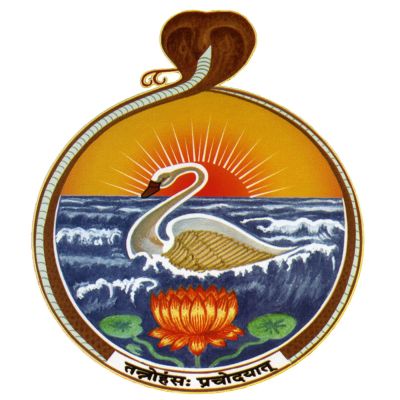Swami Tattwamayananda’s class on Srimad Bhagavad Gita is held at the Vedanta Society of Northern California, San Francisco (founded by Swami Vivekananda in 1900) on Friday evenings in the First Universal Hindu Temple in the West (founded by Swami Trigunatitananda in 1905). Classes are held on Friday night at 7:30 pm. All are most welcome.The Srimad Bhagavad Gita is the most important spiritual classic of Hinduism.Swami Tattwamayananda, currently the Minister of the Vedanta Society of Northern California, San Francisco, (originally founded by Swami Vivekananda in 1900) served in various centers of the Ramakrishna Order in India as editor, publisher, and teacher of Sanskrit, Advaitic texts such as Sri Shankaracharya's commentaries on the 'Prasthanatraya' (the fundamental Sanskrit texts of Vedanta philosophy), Buddhism and Indian philosophy. He underwent traditional training in Hindu scriptures, Sanskrit, Vedic and Vedantic literature for many years, from his early days...
https://www.spreaker.com/show/srimad-bhagavad-gita_1
2013 Lake Tahoe Retreat 1 - Dynamism Without Anxiety | Swami Tattwamayananda
Verses: 18.73, 2.54, 4.1, 4.2, 2.55, 2.48, 2.50, 4.18
-The Bhagavad Gita is a conversation between two great men of action. In verse 18.73, Arjuna has had his conflicts resolved.
-We must win the battle within between the senses and the spirit. When we win the battle, we assert our true nature.
-A sthitaprajna has had the real experience of Atman. In verse 2.54, Arjuna asks for the characteristics of a sthitaprajna.
-We should not just imitate these characteristics, we need to imbibe and acquire them ourselves.
-Samadhi is the focus of the mind on the all-pervading Atman. It is already our true nature.
-Sankaracharya's definition of a sthitaprajna
-A spiritual seeker who realizes he is not this psychophysical mechanism but is rather this Atman. This faith, conviction, experience, is very deep and therefore has very few conflicts
-How does such a person behave when he comes out of the monastery or cave and has to interact in the world?
-Verses 4.1 and 4.2 describe the ideal of a Rajarishi - the dynamism of a king with the wisdom of a sage. He works and takes care of all problems in the world without losing his balance because of the result of the work.
-This Yoga was lost because those who were supposed to teach it deviated from real Yoga so people were misled.
-Verse 2.55 – a stithaprajna can accomplish the greatest task with complete calmness. He gives up all desire and ambition. It is possible only when he combines the knowledge of Atman with a strong sense of duty.
Four stages of action are discussed:
1) Tamo guna: running away from our duties and responsibilities. There is great desire yet no ability to actually act to achieve those goals.
2) Rajo guna: strong ambition for accomplishing something great. This is much better than tamo guna but will likely swing between extreme joy and great disappointment.
3) Karma yoga: working with all efficiency but without anxiety as to the result. This is action without desire. (Verse 2.48, 2.50)
4) Highest stage – seeing action in inaction and inaction in action. (4.18) He sees the Atman everywhere, who does not participate in action. He transcends the three gunas.
